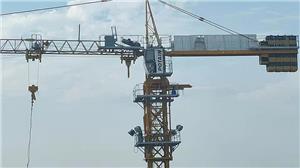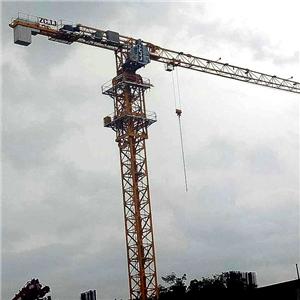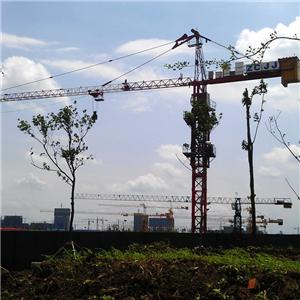the tower crane hanging life, is the tower hanging rated life accurate
At present, most tower hoists on the market do not specify the design life of the product on the information provided to users such as instructions.
According to the GB5144 "Safety Regulations for Tower Cranes", the normal use of the main bearing structure of the tower crane should not exceed 1.25 × 10s working cycles. The rough estimate is about 8 to 10 years.
According to the "Tower Suspension Design Code", the tower crane designed for this type of work cycle is of a lower grade and can only work under most medium loads and less maximum loads.
The use of Tower hoist shows that in recent years, there have been more fatigue cracks in tower hoist steel structures using more than 10 years and less than 80 TM.
At the same time, more and more fatigue cracks have been found in the steel structure of the tower crane that has been used for about 5 years. Some fatigue cracks were discovered in time, corresponding remedial measures were taken, and a few were not found, resulting in major accidents.
Most of the cracks occur at the top and bottom of the tower and the bottom of the tower.
It can be seen that at present, a large amount of 80tm tower lifts below the level of the tower, most of which are used for about 10 years, are no longer suitable for use, and small products(25tm, 31.5 TM, 40tm, 63tm, etc.) are in worse condition. The tower lifts above 100tm are better.
Due to the widespread existence of severe overload, if fatigue cracks are used as a sign of expiration of life, it is estimated that 5 % of Tower cranes below the 80tm stage have early fatigue in about 5 years.
The industry standard "Technical Regulations for Safety Assessment of Construction Lifting Machinery" implemented on August 1, 2010 has a landmark significance for the safety management of construction cranes. It changes this kind of equipment from "infinite life management" to "finite life management."
The standards stipulate that:
(1) The factory life of a tower crane below 63tm exceeds 10 years.
(2) 63tm ~ 125tm tower hanging for more than 15 years.
(3) More than 125tm tower hanging for more than 20 years.
(4) Construction lifts of the SC type for more than 8 years and SS type for more than 5 years must be evaluated and qualified before they can continue to be used or downgraded. If they are not qualified, they must be scrapped.
(5) The maximum effective period of 1 to 3 years after the evaluation of each type of tower crane and elevator is set.
In order to ensure that the evaluation is more operable, the standard determines the important parts and parts to be evaluated for tower lifts and lifts, evaluates the contents of the inspection, and checks the methods and instruments for measurement. As well as the basis for judging whether or not to pass, there are relatively clear provisions.
(1) After the promulgation and implementation of the Technical Regulations for the Safety Assessment of Construction Lifting Machinery, the tower crane user shall, in accordance with the regulations, dispose of a large number of old equipment that has expired and is still in use, so as to eliminate safety hazards.
(2) Pay attention to the quality education of Tower hanging managers and tower hanging operators. Trained the tower crane operator in theoretical knowledge and practical operation skills.
(3) The property right unit shall establish a non-destructive inspection system for the main components of the tower crane for more than five years, and promptly master the intact condition of the equipment. If the equipment is rented, it shall provide a tower crane that has been tested for injury and is in good condition.
(4) The tower crane manufacturer indicates to the user the work level, number of work cycles, or rated service life of the product on the instructions and other materials to enable the user to understand the requirements for the use of the product.
(5) The government departments shall strengthen supervision over the use of towers for more than five years. In addition to requiring the owners of towers to conduct regular self-inspection, the supervisory authorities shall also conduct inspections.
(6) The use of reliable technical means to strengthen the monitoring of Tower lifting. For example, the black box for tower lifting can be scientifically tested for illegal operation of Tower lifting, provide real and reliable data for managers to effectively manage equipment, effectively prevent and suppress accidents, and eliminate hidden dangers to safe production.
At the same time, it also provides detailed data inquiries for the quality supervision department.




